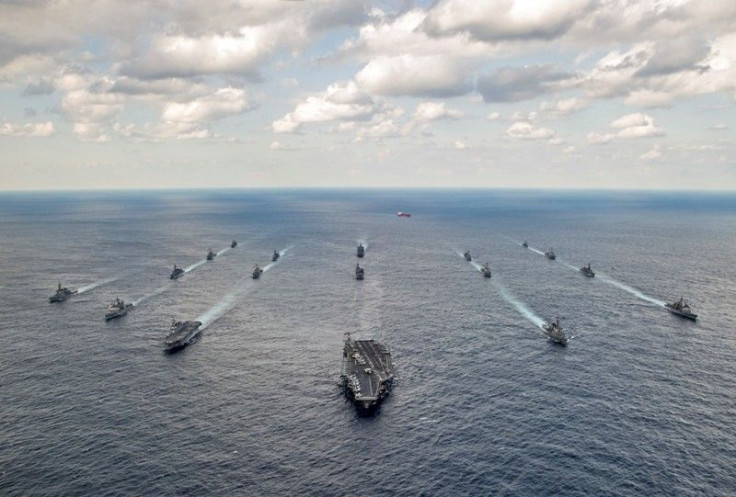US Navy Seeks More BMD Ships; Adds Advanced Long Range Anti Ship Missile To Armour

The top brass of the U.S. Navy has called for urgent modernisation of its ships by faster addition of ballistic missile defense capability to ships and increase the strength of BMD fleet. The matter was raised by Sean Stackley, Navy’s acquisition chief, while noting the twin challenges faced by the Navy, such as ageing of fleet and tightening of budgets. These two factors are stonewalling Navy’s ambitions of upgrading its Aegis guided missile destroyers with the desired BMD capability.
In a key note address on the occasion of American Society of Naval Engineers’ Day 2015, on March 4, Sean Stackley said the route to reach a 300-ship navy is by “ensuring the ships in our inventory today are mission-capable and relevant for their full service life.” Stackley explained the ongoing modernization efforts being undertaken by the Navy, such as refueling the Ohio-class ballistic missile submarines or SSGN-726 and refueling overhauls of the Nimitz-class aircraft carriers or CVN-68 in addition to the upgrading of amphibious dock landing ships. “Most significantly, we’re on the front end of modernising our Aegis cruisers and destroyers. Come what may in the budget environment, we need to complete this effort,” Stackley said.
Increase Ship Count
The remarks of the Acquisition chief came, after reports surfaced that five Flight IIA Arleigh Burke-class guided missile destroyers would skip a combat system upgrade for adding BMD capabilities. It may save the Navy $500 million over the next five years as budget caps are likely in fiscal 2016. But this will add pressure on preparing the planned BMD-capable fleet, demanded by the combatant commanders.
Stackley said fleet size needs to go up, not down, if the demands of combatant commanders have to be met. Referring to their strategic importance, Stackley said backbone of the fleet is Aegis cruisers and destroyers. There are 84 today at sea and that number is growing. But the reality is that the cruisers are at midlife, and destroyers are also entering midlife. Stackley called for giving the fleet a full service life even through midlife upgrades to get them the desired degree of ballistic missile defense and raise the BMD ship count.
30-Year R&D
However, Stackley reassured the Navy with a new plan to boost its resources by starting a 30-year research and development plan to ensure that the Navy has the capabilities and skilled workforce to stay relevant in the future. The Research team will be led by Chief of Naval Research Rear Adm. Mat Winter and former Marine Corps Systems Command executive director John Burrow.
Stackley said they will guide the investments on future war-fighting capabilities to ensure that the Navy is not merely the largest in the world but also the most powerful in the world. Stackley asserted the primacy of future cruiser replacement in the 30-year R&D plan. He called for better technologies, capabilities, timelines to support a cruiser capability that can facilitate the retirement of the CG-47 class.
Anti Missile Killer
Meanwhile, the U.S. Navy got another boost in tactical defence by virtue of the long cherished anti-missile weapon system, the Long Range Anti-Ship Missile (LRASM). The Navy has been pressing for such a sophisticated weapon system to counter new threats, including China's carrier-killer DF-21D Dong Feng missile. The LRASM will “provide a leap ahead in U.S. surface warfare capability.” The missile can operate in antiaccess/area denial or A2/AD environments with robust anti-missile defense and fierce electronic warfare with the ability for "jamming" guidance systems. They will be too hard for a Boeing Harpoon missile to overcome. LRASM can also operate independently and under remote guidance and survive GPS jamming.
DARPA’s lead contractor Lockheed Martin has designed the missile. It can guide itself to targets using "autonomous guidance algorithms" even in the absence of remote control or GPS by pinpointing strike targets independently. Having completed three successful flight tests, LRASM had its transition from a DARPA technology demonstration to a full-fledged acquisitions program. It is likely to be deployed in 2018.
(For feedback/comments, contact the writer at kalyanaussie@gmail.com)





















